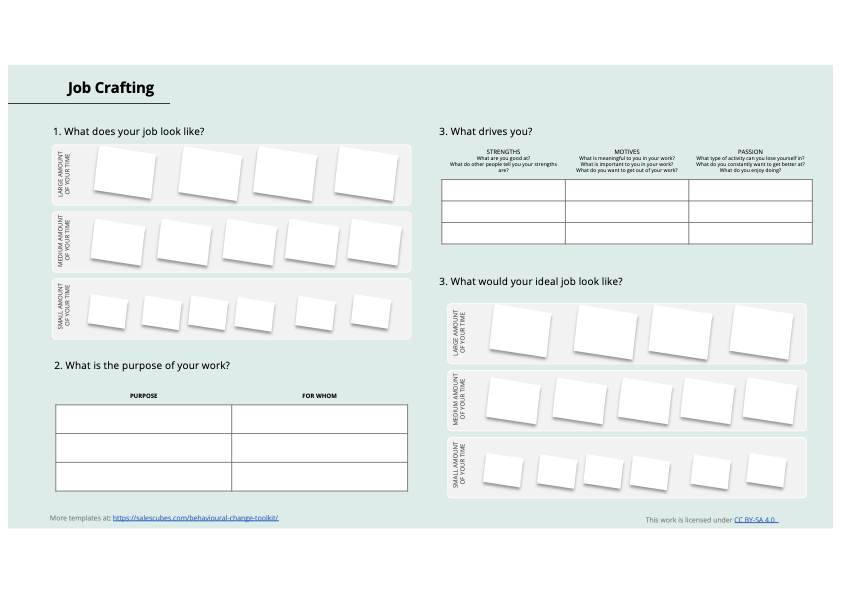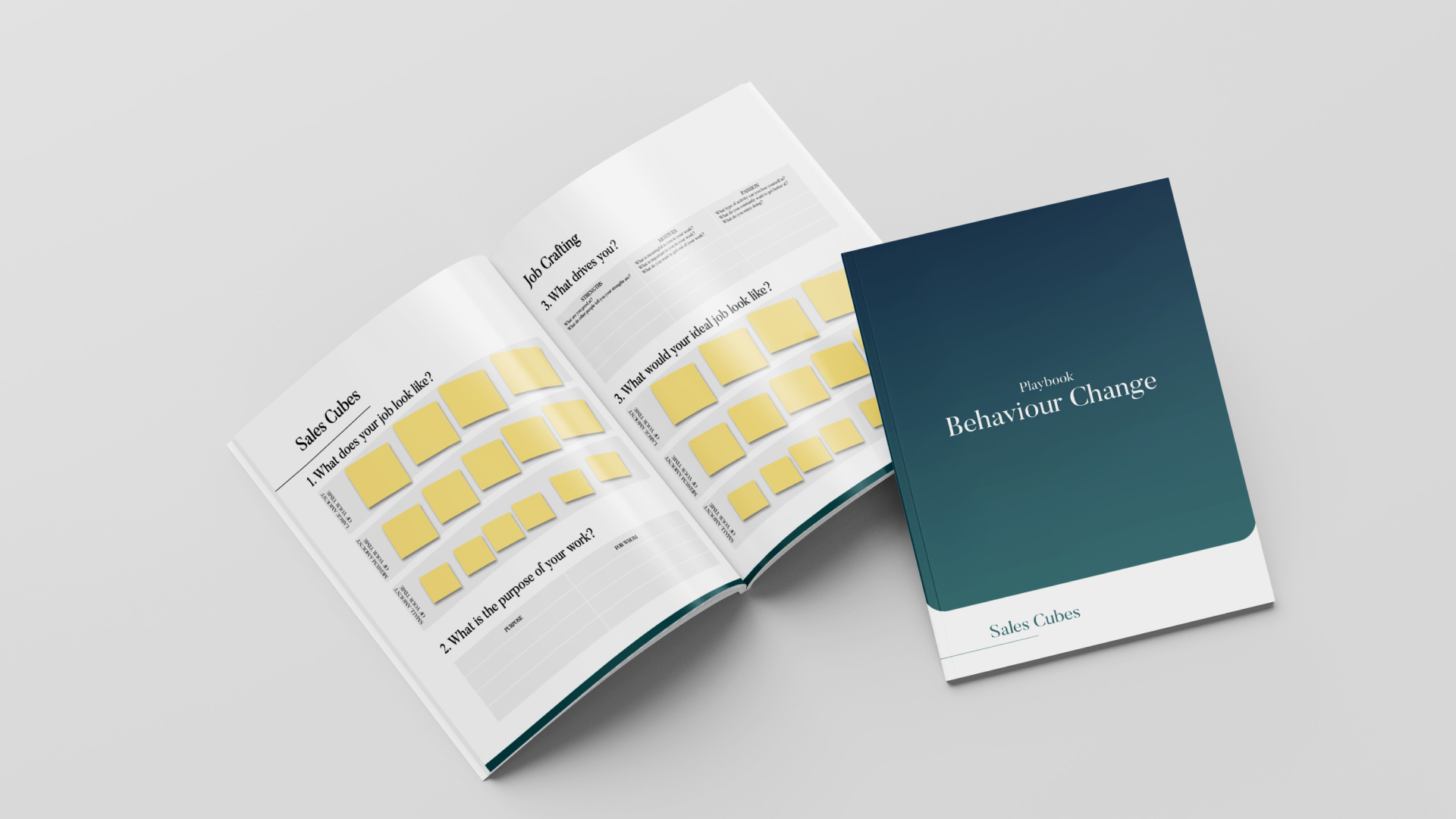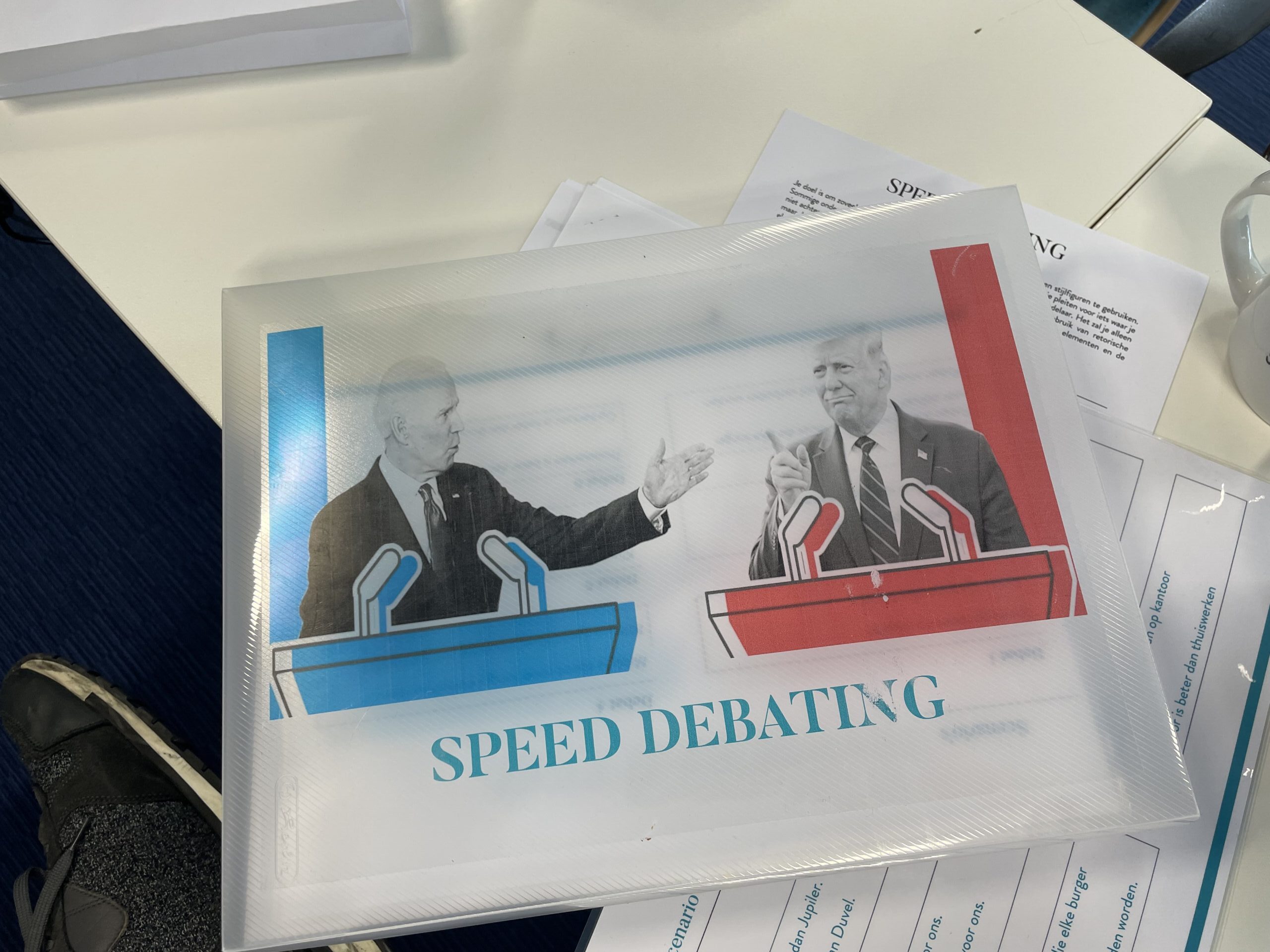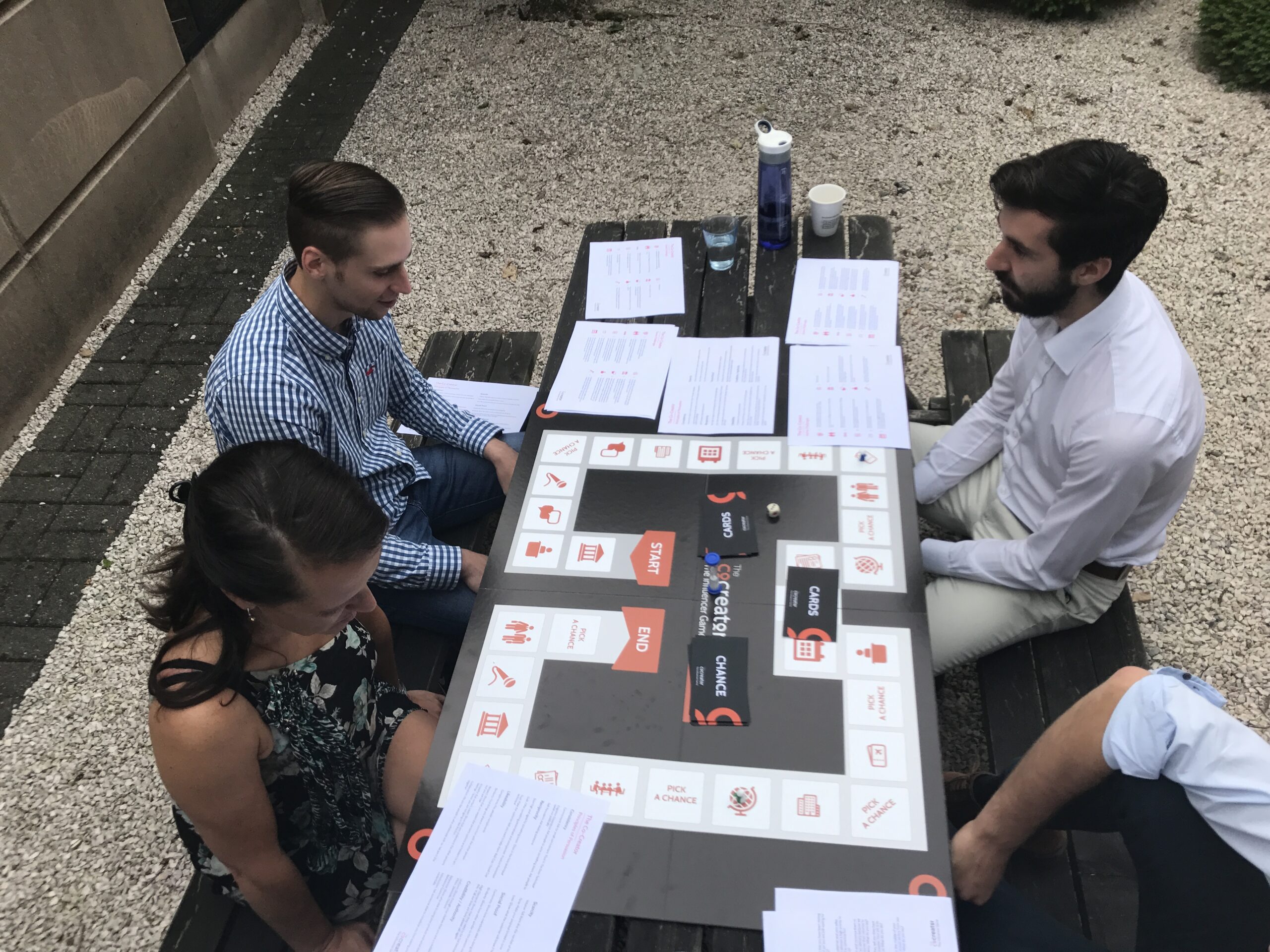What is it?
Job crafting is when employees change parts of their job to better match what they’re good at and what they like. It’s more than just following a job description; it’s about making the job fit you. The term ‘Job Crafting’ was originally coined by Amy Wrzesniewski and Jane E. Dutton in 2001. This can mean doing different tasks, working differently with coworkers, or even thinking about your job in a new way. The best part about job crafting is that it makes people feel in charge of their work again. This makes them happier and more excited about their jobs, which is good for everyone.
How Useful Is It?
Within the context of behavioural change Job Crafting is especially useful when facing tough resistance. This resistance isn’t always about the change we’re introducing, but more about how it changes jobs and affects people personally. As markets and organizations evolve, people’s roles and responsibilities also change, often little by little. These small changes can add up, and sometimes, people don’t notice them until they reach a point where their jobs don’t excite them anymore. This lack of motivation often becomes clear when we’re about to bring in a new change. That’s where Job Crafting comes in handy. It’s a method that lets team members rearrange their work in a way that reignites their enthusiasm and passion for their roles.
Applications
Job crafting can be applied in various settings:
-
- Corporate Sector: Employees can tailor their roles to better fit organizational goals while aligning with their strengths.
-
- Small Businesses: Employees in small businesses can craft their roles to wear multiple hats in a way that leverages their diverse skills.
The Process
Step 1: Assessment
In this first step, each participant takes a closer look at their current job activities. They should review all the tasks they’ve done in the past month by examining their calendars in detail. Then, categorize each task as a small, medium, or large activity. This helps in understanding the scope and variety of their work.
Next, participants should reflect on the purpose and impact of their activities. They need to think about the ‘why’ behind their tasks – what’s the goal of their work and who does it affect? This could include colleagues, customers, suppliers, or even people in their personal lives. By doing this, they can gain a clearer understanding of the significance of their work and how it influences others. This step is not just about listing tasks; it’s about connecting with the value and impact of their work, fostering a sense of purpose and meaning.
Step 2: Strengths, Interest and Passion
In this step, participants delve into self-reflection to pinpoint their key strengths, interests, and areas they are deeply passionate about. It’s essential for each person to think about what they excel at, what topics or tasks captivate their interest, and what genuinely ignites their enthusiasm.
To kickstart this process, a group discussion can be incredibly beneficial. Participants share their identified strengths with the group, which not only fosters a supportive environment but also allows for the exchange of perspectives. This group interaction can often reveal hidden strengths or passions, as colleagues may recognize and highlight qualities in each other that aren’t always self-evident. Engaging in this shared dialogue is not only insightful but also encourages team bonding and mutual understanding.
Step 3: Identify Opportunities
Now, each participant is invited to explore ways to tweak their job tasks, interactions, or perceptions to better align with their personal strengths and organizational objectives. This stage is the essence of job crafting and can be approached in several ways:
-
- Task Crafting: This involves altering the actual tasks of the job. For example, a salesperson might decide to dedicate more time to prospecting new clients and reduce time spent on other tasks. This shift allows them to focus on what they excel at or enjoy more.
-
- Relational Crafting: This is about changing the dynamics of who you work with. For instance, a salesperson might swap some clients with a colleague to better suit their interpersonal strengths or to develop new professional relationships.
-
- Contextual Crafting: This focuses on modifying the work setting or how the job is carried out. A good example is a salesperson choosing to call clients from their home office, creating a comfortable environment that makes them feel more relaxed and less self-conscious.
-
- Cognitive Crafting: Here, the aim is to change how one views certain aspects of their job. For example, a salesperson might start viewing their role more as mentoring younger colleagues instead of just providing basic sales training, adding a sense of fulfilment and purpose to their work.
These crafting methods allow participants to reshape their work experience, making it more meaningful and aligned with their skills and goals. By doing so, they can find greater satisfaction and effectiveness in their roles.
Step 4: Develop an Action Plan
The proposed changes are then collaboratively discussed within the team and with the team manager to assess the practicality and impact of each suggestion. Once a consensus is reached on which changes are feasible, each team member develops a personalized action plan to guide the implementation of these adjustments. This step ensures that every proposed change is thoughtfully considered and aligned with the team’s overall objectives and capabilities.
Step 5: Take Action and Reflect
Put the agreed-upon changes into action and consistently evaluate their effect on both job satisfaction and performance. This step is about actively making the changes a part of your daily work routine and periodically reflecting on the positive or negative impacts these adjustments have on your overall work experience and effectiveness.
Sources:
- J. Berg, J. Dutton and A Wrzesniewski, 2013, ‘Job Crafting and Meaningful Work 1 Job crafting and meaningful work’, researchgate.net
- A. Wrzesniewski, J. Berg, and J Dutton, 2010, Managing Yourself: Turn the Job You Have into the Job You Want, Harvard Business Review
- K Gilbert, 2022, To Be Happier at Work, Think Flexibly about Your Job—and Yourself, Yale Insights
- J. Dutton and . Wrzesniewski, 2020, What Job Crafting Looks Like, Harvard Business Review
- B. Debruyne, 2012, Job Crafting Motiveert Verkopers, Trends Magazine
- J. Coleman, 2022, HBR Guide to Crafting Your Purpose, Harvard Business Review press
- M. Geldenhuys, A. Bakker, E Demerouti, 2020, How task, relational and cognitive crafting relate to job performance: a weekly diary study on the role of meaningfulness, European Journal of Work and Organisational Psychology
- S. Lin,B Meng and Q. Wang, 2022, The Double-Edged Sword Effect of Relational Crafting on Job Well-Being, Organizational Psychology
Tool



